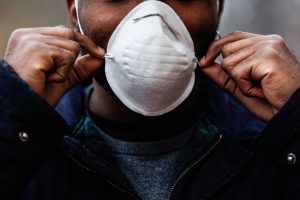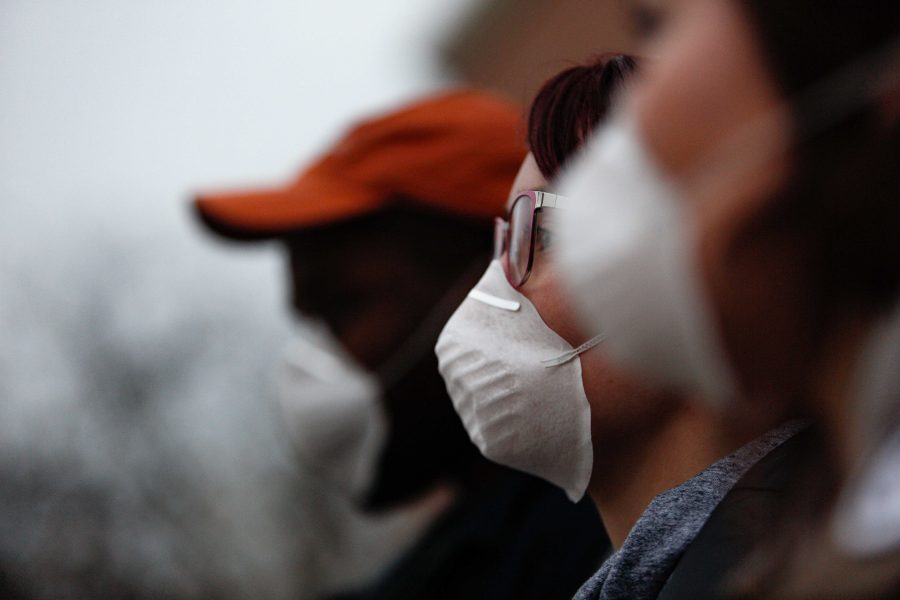Salt Lake City natives are no stranger to the temperature inversion which occurs every winter and increases particulate pollution in the valley to sometimes dangerous levels. For those who are transplants to Salt Lake City, a temperature inversion is when a layer of warm air traps cold air in the valley, preventing the air from mixing. This also traps man-made pollution until a strong enough storm blows through, mixing the trapped air and allowing pollution to leave. Human actions such as burning wood and, most significantly, driving cars put particulate pollution into the air which becomes dangerous when trapped. Which is why you’ll often see air quality warnings encouraging you to reduce driving and idling your car.
Trapped pollution can cause respiratory problems. For most people, the pollution doesn’t pose an immediate or substantial threat. Because of the nature of inversion, exposure to high levels of particulate matter (PM) is sporadic, not chronic. However, those with weakened immune systems, asthma or other preexisting respiratory conditions can be severely impacted by even lower levels of PM.
A study from 2014 found visits to the ER increased by nearly 40 percent on days with higher levels of PM. Specifically, the concern is PM 2.5, which refers to the size of the particulates. PM 2.5 means the particulates are 2.5 microns or smaller.
Luckily there are ways you can reduce your exposure to PM during the season of inversion in Salt Lake City. The first is to simply spend more time indoors on days where the levels of PM 2.5 is higher. Google Alerts will send you a notification when the levels reach a potentially dangerous threshold. However, reducing exposure isn’t always possible. If you walk, bike or take public transportation to class or work, staying indoors isn’t an option. In which case, you can get a mask or respirator.

It’s important to keep in mind a general surgical mask or a bandana will not cut it when it comes to pollution. Because PM 2.5 is so small, it easily passes through surgical masks and fabric. You’ll need a mask that fits snugly over your mouth and meets the N95 mask requirements. You can buy packs of disposable N95 respirator masks rather cheap from places like Amazon or Home Depot.
If you want to forgo the plain white mask there are also a ton of reusable options with fun patterns and different features. Amazon has a plethora of reusable options, but the styles do seem somewhat limited. Etsy is a great place if you want a funky pattern or custom design. Remember, you need an N95 compliant filter in order for the mask to be useful.
The Salt Lake City-based company, jaMo Threads, sells N95 compliant reusable masks online in a variety of stylish patterns. They even carry a kids line. Their masks are actually a cross between a traditional respirator and a gaiter, so the fabric extends below the face and can be tucked into the collar of your shirt. This is a great option to keep you a little warmer, especially since inversion happens in the winter.
Vogmask is another online site with reusable masks. Their masks are the traditional type which just covers your mouth and nose. They have significantly more pattern options than other stores. Vogmask also has multiple fabric and sizing options for their masks, including an organic fabric collection. Their goal as a company is not just to provide stylish masks to those in need, but to start a global dialog about pollution and cleaning the air.
Mask prices vary depending on quality, but typically a ten-pack of disposable masks costs $10 to $15. Reusable masks are more expensive than disposable and again vary on quality, typically around $30, but it may be a worthy investment even if you’re only in Salt Lake City for school.
While inversion is ultimately outside of our control, the pollution we put into the air is not. So it really is important to listen to those warning signs on the interstate and reduce your driving. This could mean carpooling with coworkers or opting to take public transportation whenever possible. Those anti-idling stickers are no joke either. In winter it’s tempting to turn your car on and get it heated while you finish getting ready for the day. However, if forgoing a little comfort means cleaner air for everyone, then it may just be worth it.




Ashima munjal • Feb 24, 2020 at 2:45 am
very nice website, I am happy with your website. Thanks for giving a piece of valuable information it is very helpful to me and others.